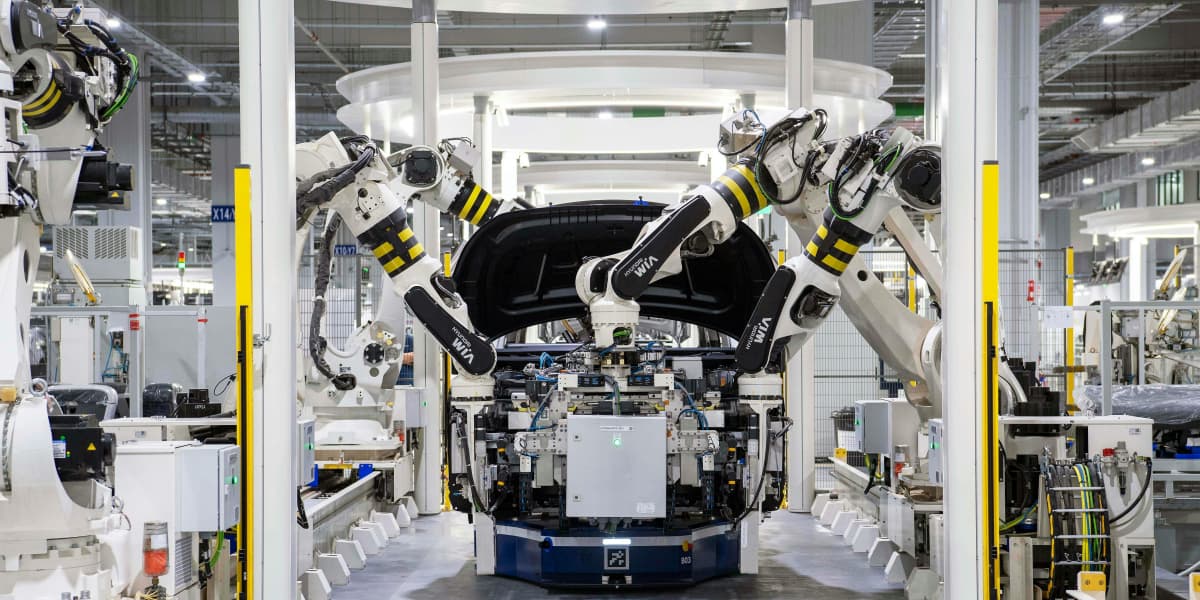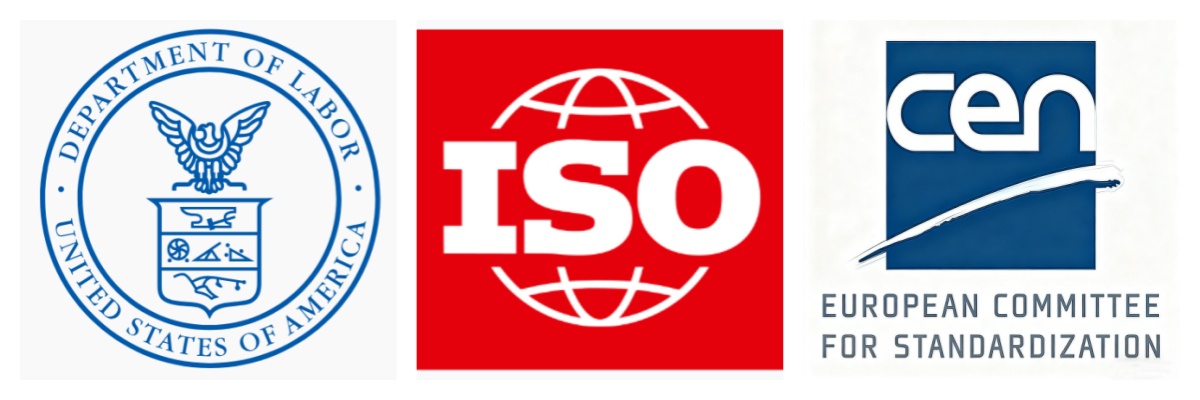工場向け産業用LED照明ガイド

エネルギー料金の高騰、厳格な安全基準、生産停止により、施設管理者は照明の見直しを迫られています。
この 産業用LED照明の実践的なガイド では、産業用LEDシステムとは何か、その背後にある国際規格と技術、適切な器具の選び方、効率的なレイアウトの設計方法、信頼できるメーカーの選定方法について説明しています。
実用的な仕様、比較チェックリスト、ROI重視のヒントが掲載されており、エネルギーコストの削減、視認性と安全性の向上、運用のコンプライアンス維持に役立ちます。工場、倉庫、作業場のための信頼できる照明計画を作成するために、ぜひお読みください。
ディレクトリ:
1. 産業用LED照明とは?
産業用LED照明とは、工場、倉庫、生産ライン、大規模な作業場などの厳しい作業環境向けに設計された高性能照明システムを指します。視覚的な快適性と美観を優先するオフィスや小売店の照明とは異なり、産業用照明は、ほこり、振動、温度変動などの過酷な条件下での耐久性、明るさ、安全性に重点を置いています。
「産業用」という用語は一般的に、照明が過酷な動作に耐えなければならないことを意味します。多くの場合、24時間稼働し、高い設置高さで、生産性と事故防止のために正確な視界が不可欠な広いエリアで稼働します
従来の蛍光灯やメタルハライドランプと比較して、産業用LED照明はワットあたりのルーメン出力が高く、瞬時に起動し、寿命が大幅に長くなります。また、メンテナンスの必要性も少なく、生産施設のダウンタイムを削減します。

産業用LED照明には、主にいくつかの種類があります。
高天井照明- 倉庫や製造工場の高い天井に最適です
ローベイライト- 作業場や組立ラインなどの低いスペースで使用します。
産業用LED投光器- 屋外ヤード、荷積みゾーン、または建物の周囲用に設計されています。
工場および作業場照明- 特定の作業に合わせて効率性、安全性、均一な明るさを兼ね備えたカスタマイズされたシステムです
つまり、産業用LED照明は、より安全で、より効率的で、費用対効果の高い作業スペースの基盤を提供し、よりスマートな産業運営への重要なステップとなります。
2. 世界の産業用照明規格を理解する
産業用LED照明は、職場における明るさ、均一性、安全性を定義する一連の国際規格によって管理されています。これらの規格は、照明が生産性、視覚的快適性、労働安全という、あらゆる産業施設の重要な目標をサポートすることを保証します。
2.1 主要な国際規格
(1) IES(米国照明学会)
IES照明ハンドブック(第11版、2020年)を発行しています。これは「照明のバイブル」とも呼ばれ、測光試験、グレア制御、エネルギー効率など、あらゆる照明設計の実践の基礎を提供します
IES RP-7(産業照明に関する推奨基準): 産業施設における照度レベル、均一性、照明器具の配置に関する詳細なガイドラインを提供します。→出典:IES照明ハンドブック、第11版(2020年)、IES RP-7-17。

(2) CIE(国際照明委員会)
照明の品質、演色性、人間の視覚反応に関する世界標準を策定しています。その主要出版物であるCIE S 008/E:2001「職場の照明」は、 多くの地域標準に影響を与えています。→出典:CIE中央事務局、オーストリア、ウィーン。
(3)ISO 8995-1:2024(CIE S 008/E:2001、更新)
ISO 8995-1:2002に代わる最新のISO/CIE共同規格。屋内作業場における視覚性能と人間工学的な照明要件を規定し、均一性、グレア限度、作業の視認性を重視しています。→出典:国際標準化機構(ISO)、2024年版

(4) EN 12464-1:2021(欧州)
EU全体の産業用内装の最低照度、均一性、演色性、およびUGR(統一グレア評価)限度を定義しています。→出典:欧州標準化委員会(CEN)
(5)OSHA 29 CFR 1926.56(米国)
作業者の安全を確保するために、様々な作業エリアの最低照度レベルを設定しています。→出典:米国労働省、労働安全衛生局
2.2 推奨照度レベル
適用領域 | 推奨ルクス (lx) | 標準参照 |
倉庫の通路(保管) | 100~200ルクス | EN 12464-1:2021 / IES RP-7-17 |
組立ラインまたは生産ライン | 300~750ルクス | ISO 8995-1:2024 / CIE S 008/E |
精密区域または検査区域 | 750~1000ルクス | IES RP-7-17 / CIE S 008/E |
屋外荷積み区域 | 100~300ルクス | IES RP-7-17 / OSHA 29 CFR 1926.56 |
2.3 照明品質パラメータ
CRI(演色評価数): 産業環境における正確な色識別には80以上を推奨します
色温度: 昼白色からクールホワイト(4000~6000K)は、制作スペースでの集中力と視認性を高めます。
UGR(統一グレア評価): 不快なグレアと視覚疲労を最小限に抑えるには、22未満にする必要があります。→出典:EN 12464-1:2021、ISO 8995-1:2024
2.4 認証および適合マーク
認証 | 地域 | 認証内容 |
UL(Underwriters Laboratories) | 米国 | 電気および火災安全への適合性を確認。 |
CE(Conformité Européenne) | EU | 安全、健康、性能に関するEU指令を満たしている。 |
DLC(DesignLights Consortium) | 北米 | エネルギー効率を検証。多くの場合、リベートに必要。 |
RoHS(特定有害物質の使用制限) | グローバル | 製品に鉛や水銀などの有害物質が含まれていないことを保証する |
これらの規格を遵守することで、産業用LED照明システムは信頼性が高く、効率的であり、世界的な安全要件に準拠していることが保証されます。
Ceramicliteは 、これらの国際ベンチマークに従い、世界中の専門家の性能とコンプライアンスの期待に応える照明ソリューションを提供しています。
3. 現代の産業用LED照明を支える技術とは?
現代の産業用LED照明は、光学工学、電子機器、スマート制御システムを組み合わせることで、最も過酷な作業条件下でも明るく、耐久性があり、効率的な照明を提供します。以下のコア技術が、今日の高性能産業用照明システムを定義しています。
3.1 高ルーメンLEDチップと高度な光学系
すべての産業用LED照明の基盤はLEDチップです。Cree 、日亜化学、Osramなどの大手メーカーは 、最小限の消費電力で最大の明るさを確保する、高ルーメン、高効率のチップ(通常150~200 lm/W) を製造しています。
精密成形レンズやリフレクターなどの高度な二次光学系は、ビームの形状と方向を調整し、倉庫や組立ホールなどの広いエリアでのグレアを最小限に抑え、均一性を最大化するのに役立ちます
3.2 効率的なドライバと放熱
LEDドライバは電流の流れを調整して一定の光出力を維持し、システムを電圧変動から保護します。産業用グレードのドライバは、多くの場合0~10VまたはDALI調光対応で、エネルギー安定性のために力率は0.95以上です
熱管理も同様に重要です。アルミダイキャストハウジング、ヒートパイプ、マルチフィンヒートシンクにより 効果的な放熱が確保され、LEDの寿命は50,000時間を超えます。
3.3 ちらつきのない高リフレッシュレート設計
低品質のドライバによるちらつきは、作業者の目の疲れや機器への干渉を引き起こす可能性があります。産業用LED照明器具は現在、定電流、高周波ドライバ (通常25kHz以上)を使用して、ちらつきのない安定した光出力を実現しています
この技術は、視覚的な快適性を向上させるだけでなく、マシンビジョンシステムや高速操作においてカメラに適した性能も確保します。
3.4 過酷な環境に対応するIPおよびIK保護
産業空間では、埃、湿気、衝撃のリスクに直面することがよくあります。IP(侵入保護)およびIK(耐衝撃)の等級は、照明器具の耐久性を定義します。
IP65~IP67: 防塵・防水性で、工場や屋外の庭に最適です。
IK08~IK10: 強い機械的衝撃に耐性があります。
適切なシーリング、シリコンガスケット、強化ハウジングにより、オイルミスト、振動、高湿度の環境でも信頼性の高い動作が可能になります。→出典:IEC 60529(IP等級)およびIEC 62262(IKコード)
3.5 スマート制御の互換性(DALI、Zigbee、Bluetooth、IoT)
現代の産業用LED照明は、ますますインテリジェントな制御システムを統合しています
DALI(デジタル調光照明インターフェース): 正確な調光とゾーニング制御を可能にします。
ZigbeeとBluetooth Mesh: 大規模施設管理のためのワイヤレス接続を可能にします。
IoTプラットフォーム: 占有、自然光利用、エネルギー監視用のセンサーを統合します。
これらの技術は、照明が運用ニーズに自動的に応答し、快適性と効率性の両方を最適化するスマートファクトリー とインダストリー4.0アプリケーションをサポートします。
光学精度、電子安定性、機械保護、スマート制御を組み合わせることで、現代の産業用LED照明は、 明るさ、信頼性、インテリジェンスのバランスを実現し、照明を受動的な器具からスマートな産業インフラの能動的なコンポーネントへと変革します。
4.産業用LED照明を使用するメリットとは?
産業用LED照明へのアップグレードは、もはや施設の近代化だけではありません。運用コストの削減、安全性の向上、持続可能性の目標達成のための実証済みの方法です。従来の照明(メタルハライドランプ、蛍光灯、HPSランプなど)に対するLEDの利点は、測定可能で長期的なものです
4.1 エネルギー効率と二酸化炭素排出量の削減
産業用LED照明は、入力エネルギーの最大90~95%を可視光に変換します。一方、高輝度放電(HID)ランプでは、わずか60~70%です。これにより、用途に応じて50~70%のエネルギー節約につながります
多くの施設では、スマート調光制御やモーションセンサーも導入されており、不要な電力消費をさらに削減しています。エネルギー使用量の削減は、企業の持続可能性とESG報告における重要な指標であるCO₂排出量の削減に直接つながります。
4.2 長寿命と最小限のメンテナンス
Industrial-grade LEDs typically last 50,000–100,000 hours, compared with 10,000–20,000 hours for fluorescent and metal halide lamps.
Because they contain no filaments or fragile glass, LEDs maintain brightness longer and are less prone to breakage from vibration or impact.
This significantly lowers maintenance frequency and replacement labor costs — especially in high-ceiling environments like warehouses or production halls.
4.3 Brighter and Safer Work Environments
LEDs deliver instant full brightness and superior color rendering (CRI ≥80), improving visibility of tools, labels, and safety markings.
Consistent illumination helps reduce accidents caused by shadows or glare, while flicker-free operation prevents worker eye strain and fatigue.

4.4 Stable Performance in Harsh Conditions
Unlike traditional lamps that degrade in cold or humid environments, industrial LEDs perform reliably between –30°C and +50°C and maintain stable lumen output in high humidity.
Sealed housings with IP65–IP67 protection prevent dust and moisture ingress, making them suitable for factories, foundries, and outdoor facilities.
4.5 ROI and Payback Period
The typical payback period for converting to industrial LED lighting ranges from 1.5 to 3 years, depending on energy costs, operating hours, and regional rebates. After payback, the continued energy and maintenance savings contribute directly to long-term ROI.
By combining high efficiency, durability, and safety, industrial lighting delivers both operational and financial value. It’s not just a lighting upgrade — it’s an investment in productivity, sustainability, and smarter facility management.
5. Which Type of Industrial LED Light Do You Need?
Choosing the right industrial LED light depends on installation height, lighting layout, and work environment. Below are the main categories used across modern industrial facilities — each designed for specific applications and performance needs.
(1) High Bay LED Lights – For Tall Warehouses and Factories
High bay lights are designed for ceilings above 20 feet (6 meters). They provide powerful, uniform illumination for large spaces such as manufacturing workshops, distribution centers, and aircraft hangars. Their deep reflectors and high lumen output ensure clear visibility even from long mounting distances.
Ceramiclite HB01 LED High Bay Light boasts a high luminous efficiency of 160lm/W and an extended lifespan of 102,000 hours (meeting the L80B10 standard at 35℃). It features a protection rating of IP67/IP69K/IK08 and comes with an 8-year warranty.

(2) Low Bay LED Lights – For Mid-Height Industrial Spaces
Low bay lights are used in areas with ceiling heights between 10–20 feet (3–6 meters), such as assembly halls, garages, and small warehouses. They offer wide-beam optics to distribute light evenly without glare, improving comfort and visual accuracy for workers.
(3) LED Shop Lights – For Workstations and Production Lines
Shop lights are typically installed above workbenches, inspection areas, or assembly tables. They emphasize brightness and color accuracy to enhance precision tasks. Slim housing and linkable designs make them easy to mount in rows, ideal for manufacturing or maintenance workshops as LED workshop lights.
(4) LED Strip Lights – For Linear or Continuous Lighting Needs
Strip lights provide linear illumination for corridors, conveyor belts, or narrow aisles. Their continuous layout eliminates dark zones, improving safety in logistics and assembly environments. They are also used under shelves or inside machinery for localized task lighting.
(5) LED Flood Lights – For Outdoor Industrial Yards and Perimeters
Flood lights are built for durability and weather resistance. They illuminate loading docks, parking lots, and construction areas with high-intensity beams, ensuring both visibility and security. Industrial-grade models often feature IP65+ protection and wide operating temperature ranges.
Each of these LED categories serves a distinct role within the industrial ecosystem — from overhead illumination to focused task lighting and exterior security.
When selecting industrial LED light fixtures, consider mounting height, coverage area, environmental conditions, and energy goals. Matching the right LED type to each application ensures optimal visibility, safety, and long-term efficiency for your facility.
6. How to Design an Efficient Industrial LED Lighting Layout?
A well-designed lighting layout is essential to achieve both energy efficiency and worker safety in industrial environments. The goal is to deliver uniform brightness with minimal shadows or glare, ensuring that every area of the workspace is adequately lit without wasting power.
(1) Assess the Space and Ceiling Height
The first step is understanding the dimensions of the facility. Ceiling height determines fixture type and beam angle — for example, high bay lights suit ceilings above 6 meters, while low bay or linear lights are ideal for mid-height areas. Taller spaces require narrower beam angles to project light further, whereas lower ceilings benefit from wider beams for uniform spread.
(2) Plan Fixture Spacing and Mounting Arrangement
Incorrect spacing can create uneven lighting or dark spots. As a general guideline, the distance between fixtures should be about 1 to 1.5 times the mounting height. For example, if lights are mounted 8 meters high, spacing them 8–12 meters apart often provides balanced coverage. Reflective surfaces such as white walls or bright ceilings can help amplify illumination and reduce the number of fixtures needed.
(3) Consider Beam Angle and Reflectance
Beam angle controls how light is distributed across the floor. Narrow beams concentrate brightness in small areas, suitable for tall shelves or high ceilings. Wide beams work better in open areas like workshops. Reflectance from walls, floors, and machinery also affects overall brightness — surfaces with higher reflectivity improve lighting efficiency.
(4) Use Lighting Simulation Tools
Before installation, lighting design software (such as Dialux or Relux) can simulate illumination patterns, predict lux levels, and optimize fixture placement. These simulations ensure compliance with local standards for workspace lighting and help identify potential glare or shadow zones.
(5) Combine Fixture Types for Layered Illumination
A single light type rarely meets all industrial needs. Combining high bay lights for general illumination, task lights for workbenches, and flood lights for outdoor or safety zones creates a layered system that balances brightness, comfort, and energy use.
By aligning fixture choice, spacing, and simulation-based design, industrial facilities can achieve a well-lit, energy-efficient, and visually comfortable environment that enhances both safety and productivity.
7. How to Choose the Best LED Industrial Lights Factory?
Selecting a trustworthy industrial LED lighting factory is critical to ensuring long-term performance, safety, and return on investment. A well-qualified manufacturer provides not just lighting products, but complete technical assurance and service reliability.
(1) Verify Factory Qualification and Production Capability
A reliable LED lighting factory should have its own production line, R&D department, and quality control system. This guarantees consistency in components, assembly, and testing. Unlike resellers who outsource manufacturing, factory-direct suppliers can control every stage of production — from LED chip sourcing to driver calibration — ensuring higher product reliability and stable supply.
(2) Check Certification and Compliance
Authentic quality always comes with recognized certifications. Look for CE, RoHS, UL, ETL, and CB marks, which indicate compliance with international electrical and safety standards. These certifications confirm that the lighting products have passed rigorous performance and safety testing — an essential factor for industrial applications.
(3) Request Samples and Validate Test Reports
Before placing large orders, sample testing is the most direct way to evaluate brightness, color consistency, heat management, and build quality. Reputable manufacturers will provide IES photometric files, LM-79/LM-80 test reports, and warranty documentation upon request.
(4) Evaluate Technical Support and Customization Capability
Every industrial site has unique lighting requirements. Choose a supplier capable of custom design, DIALux simulation support, and flexible mounting solutions. Technical expertise in smart controls (e.g., DALI, Zigbee) and energy modeling is also a sign of a mature manufacturer.
(5) Compare Warranty and After-Sales Service
Warranty length reflects confidence in product durability. The industrial standard is typically 5 years, but leading manufacturers offer 8–10 years. Comprehensive after-sales service and fast response are equally important for long-term operations.
Ceramiclite is a professional industrial LED lighting manufacturer integrating R&D, production, and global sales. The company holds CE, RoHS, CB, CCC, UL, and ETL certifications and provides up to 10 years of warranty for select products — a commitment that exceeds most competitors.
Explore Ceramiclite’s professional-grade industrial lighting solutions today!
8. Future of Industrial LED Lighting — What’s Next?
Industrial LED lighting is evolving from simple illumination to intelligent, data-driven infrastructure that supports energy efficiency, safety, and productivity goals. The next generation of lighting systems will redefine how factories and warehouses operate.
(1) Smart Industrial Lighting Systems
The most significant innovation is the adoption of smart sensors, IoT platforms, and automated control systems. These allow lights to adjust brightness based on motion, daylight, or occupancy levels — reducing unnecessary power use. Integration with protocols like DALI-2, Zigbee, and Bluetooth Mesh enables centralized control and remote monitoring, helping facility managers improve energy efficiency by up to 60% (source: U.S. Department of Energy, 2024).
(2) 再生可能エネルギーとの統合
工場では、LEDシステムを太陽光発電や再生可能エネルギーソリューションと組み合わせるケースが増えています。スマートコントローラーは、照明スケジュールを敷地内のエネルギー生成と同期させることができるため、企業は 運用コストを削減しながら、ネットゼロとESG目標を達成できます。
(3) より良い職場環境のための人間中心の照明
省エネに加えて、将来の照明設計は、人間の快適さと概日リズムの調整に焦点を当てます。一日を通して色温度と強度を調整することで、人間中心の照明は集中力を高め、疲労を軽減し、安全性を高めることができます。これは、CIEとWELL Building Standardの研究によって裏付けられている成長傾向です。
(4) 予知保全とデータ分析
AI主導の分析により、コンポーネントの故障を発生前に予測できるようになります。これにより、ダウンタイムが短縮され、メンテナンススケジュールが最適化され、大規模施設での継続的な運用が保証されます。
産業用LED照明の未来は、スマートで持続可能、そして人間中心であり、インテリジェントな工場の基盤となります。
→ ガイド「産業用LED照明の最新情報 2025」で詳細をご覧ください。
9. 結論
産業用LED照明は、もはや単なる照明ではなく、効率性、インテリジェンス、持続可能性が重要です。最新のLEDシステムにアップグレードすることで、工場や倉庫は、メンテナンスの削減とよりスマートな制御を通じて、エネルギー消費量の削減、より安全な作業環境、そして長期的なROIを実現できます。
産業が自動化と炭素削減に向かうにつれて、LED技術は未来に備えた施設の基盤となります。
性能、信頼性、そしてよりスマートな製造のために設計された、Ceramicliteのプロ仕様の産業用照明ソリューションをご覧ください。
_thumb.jpg)

